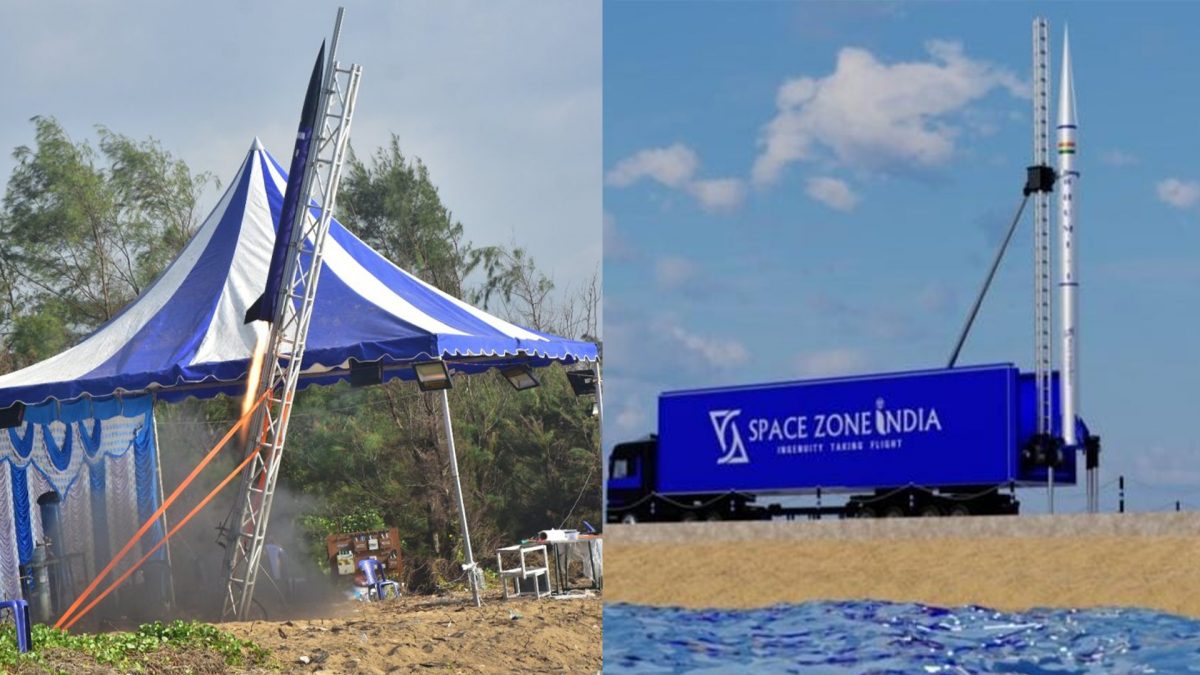Rhumi-1 is designed to reach an altitude of 35 kilometres, carrying three Cube satellites and 50 Pico satellites. After deploying its payload, the rocket is engineered to fall back into the sea, where it will be recovered and prepared for future launches read more
)
The he technology developed for Rhumi-1 could be applied to missile technology, promoting the ‘Make in India’ initiative and reducing the country’s reliance on foreign imports for defence equipment. Image Credit: Space Zone India
On August 24, India is set to make history with the launch of its first hybrid reusable rocket, the Rhumi-1. The rocket will be launched from the East Coast Road coastline in Chennai, marking a significant milestone for the country’s aerospace industry. This event represents a leap forward in India’s space technology, promising cost-effective solutions for space exploration.
Rhumi-1 is designed to reach an altitude of 35 kilometres, carrying three Cube satellites and 50 Pico satellites. After deploying its payload, the rocket is engineered to fall back into the sea, where it will be recovered and prepared for future launches. This reusable design is a key feature that could revolutionize space travel by significantly reducing costs.
The innovative rocket utilizes a hybrid propulsion system, combining a liquid oxidizer with solid fuel. Its airframe is constructed from advanced materials such as carbon fibre and glass fibre, ensuring durability and efficiency. A parachute deployment system, developed in-house, aids in the rocket’s safe descent back to Earth. The mission will also gather crucial data on radiation levels, vibration intensity, and temperature, contributing to future advancements in aerospace technology.
Anand Megalingam, the CEO of Space Zone India, the company behind Rhumi-1, explained that the primary goal of the rocket is to lower the cost of space missions.
The hybrid propulsion system, which uses Nitrous Oxide and Wax fuel, was chosen for its cost-effectiveness. Megalingam emphasized that this system was developed at a fraction of the cost of traditional liquid propulsion systems, making space exploration more accessible and affordable.
The rocket’s name, Rhumi-1, holds personal significance for Megalingam. It is named after his son, Rhumendran, as a tribute to the time he has sacrificed for the project. This emotional connection underscores the dedication and personal investment that has gone into the development of the rocket.
Support from both the Indian government and Tamil Nadu’s state government has been crucial in bringing this project to fruition. This collaboration between the central and state governments highlights the importance of public-private partnerships in advancing India’s space capabilities.
The Tamil Nadu Industrial Development Corporation (TIDCO) and INSpace have also played a vital role by signing a Memorandum of Understanding (MoU) that allows private companies to use the new launchpad under construction in Kulasekarapattinam. This initiative is aimed at encouraging more private sector participation in space exploration, which is expected to drive further innovation and growth in the industry.
Jose Charles Martin, Director of the Martin Group of Companies and a patron of the project, pointed out that the private sector in India has a vast potential to explore in the field of space technology. He highlighted that the cost of sending a satellite into space in India is only a tenth of what it would be in the West. This significant cost advantage positions India as a competitive player in the global space market.
Martin also suggested that the technology developed for Rhumi-1 could be applied to missile technology, promoting the ‘Make in India’ initiative and reducing the country’s reliance on foreign imports for defence equipment. This potential crossover between space technology and defence underscores the broader implications of the Rhumi-1 project for India’s technological and strategic future.

 3 weeks ago
5
3 weeks ago
5
)
)
)
)
)
)
)
)
)
)
)
)
)
)
)
)
)
)
)
)
)
)
)
)
 English (US) ·
English (US) ·